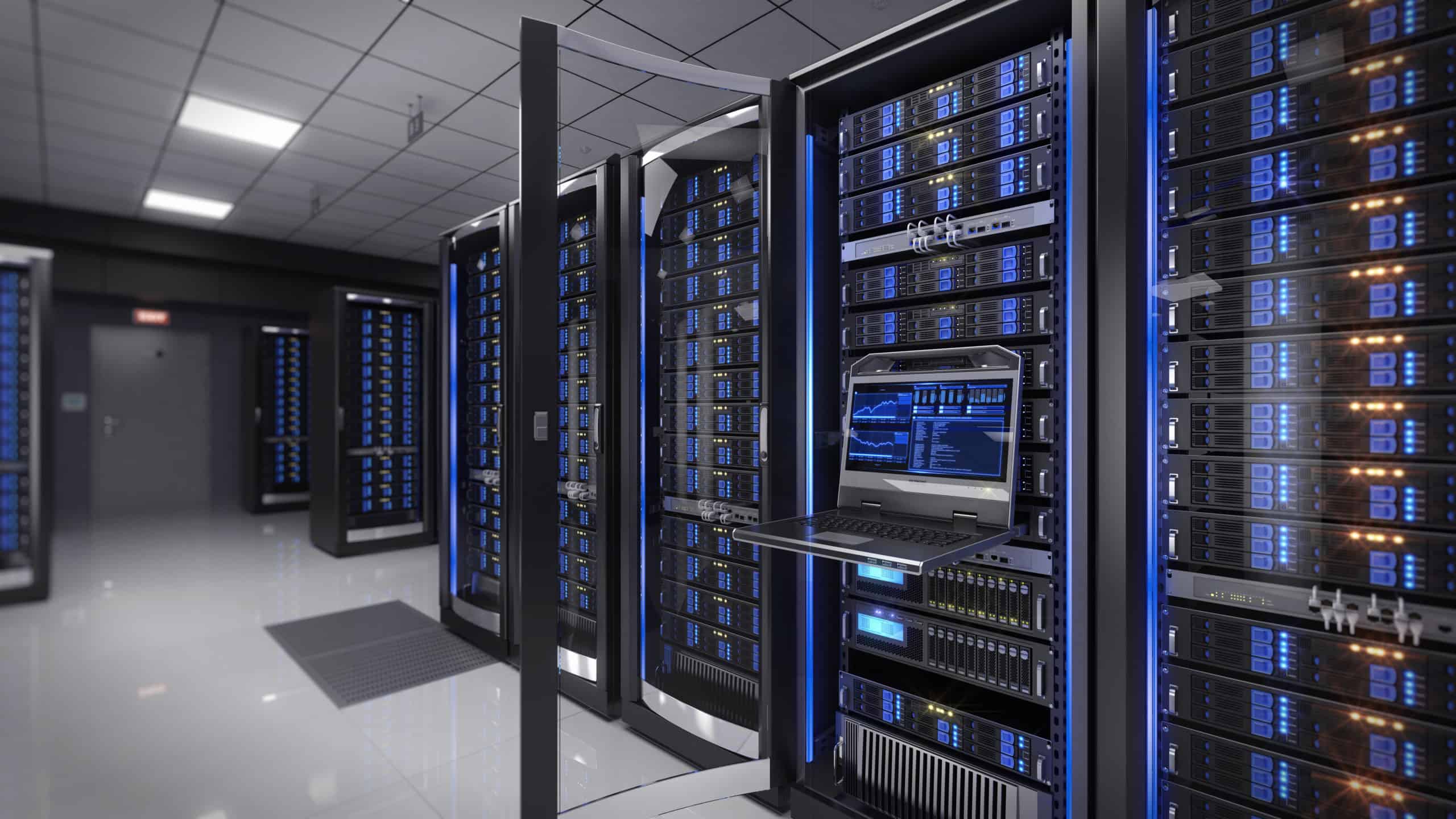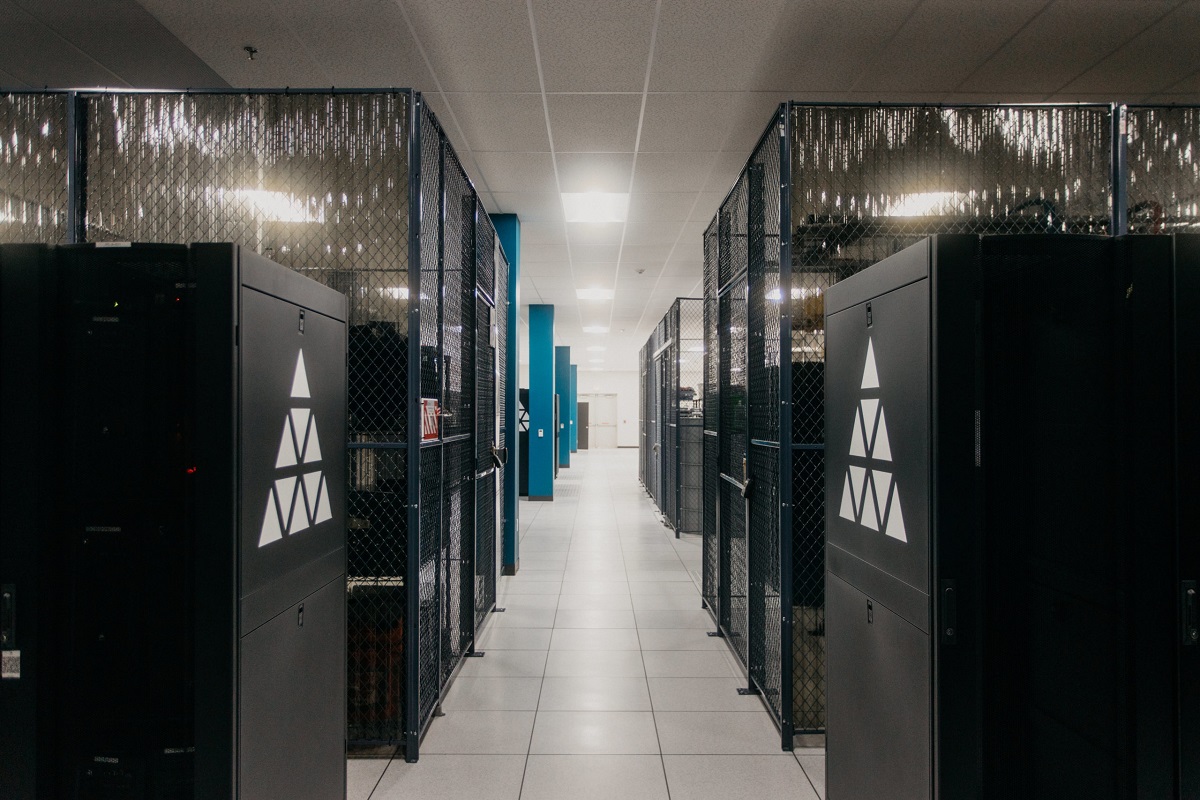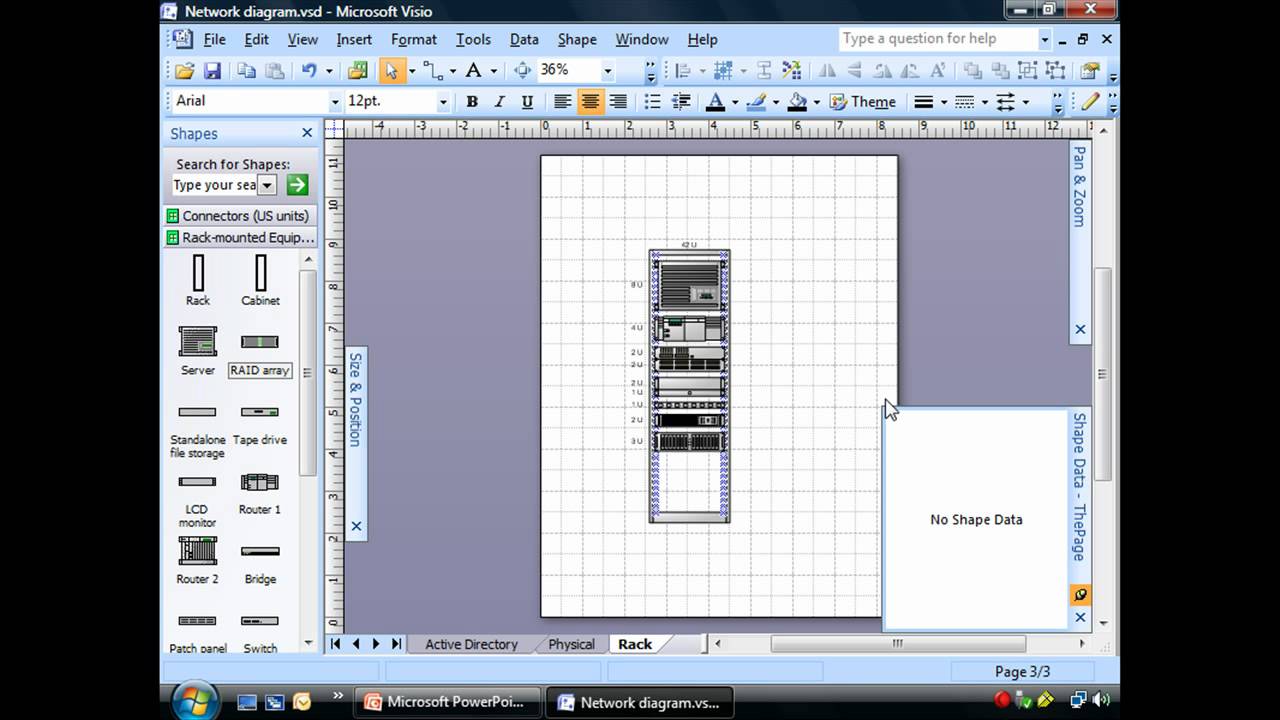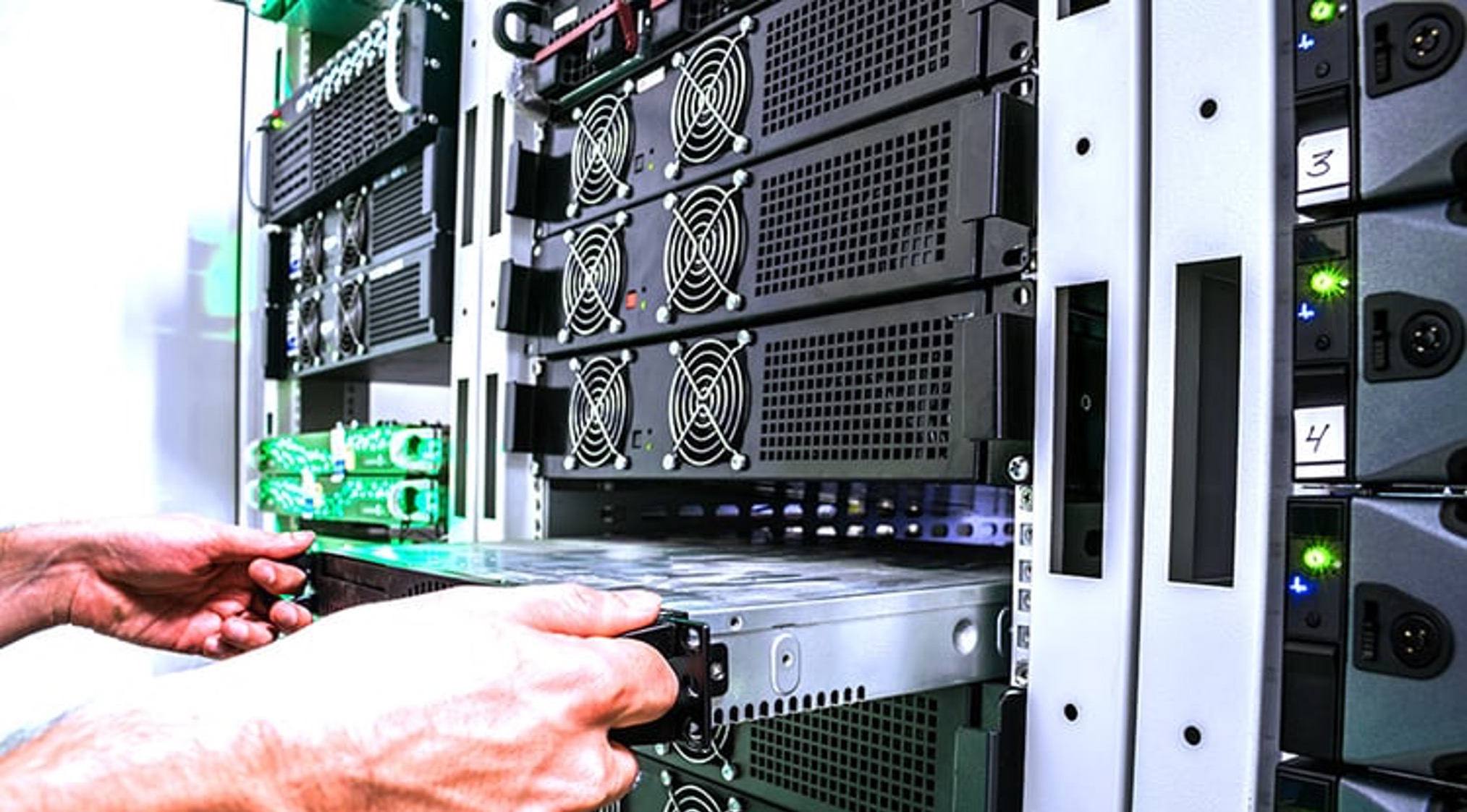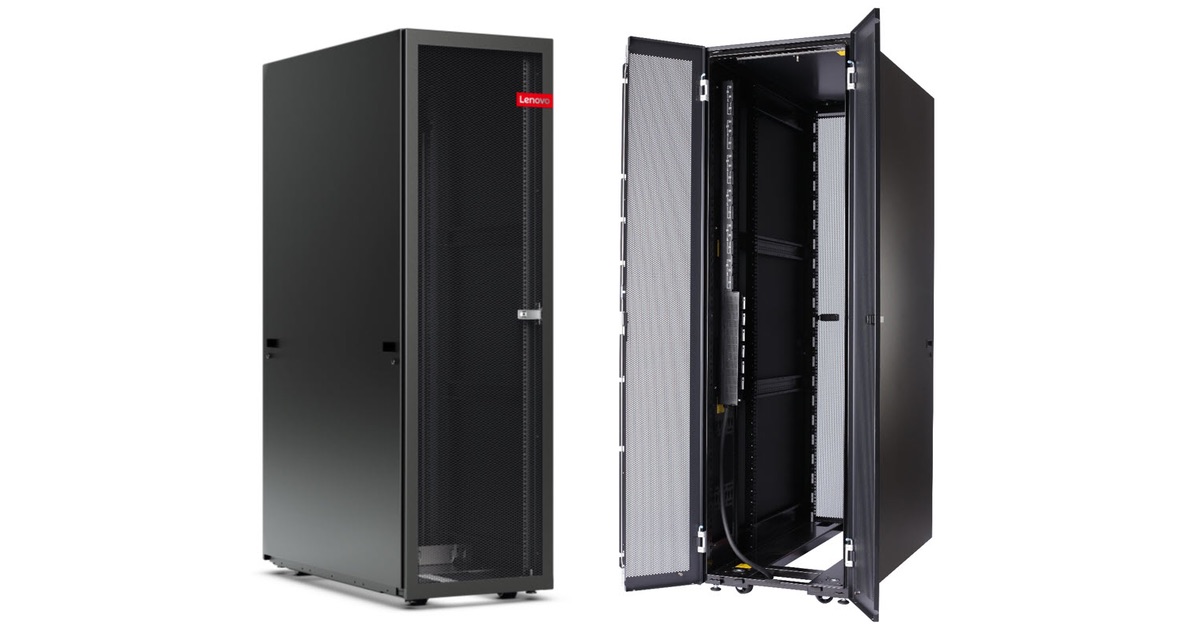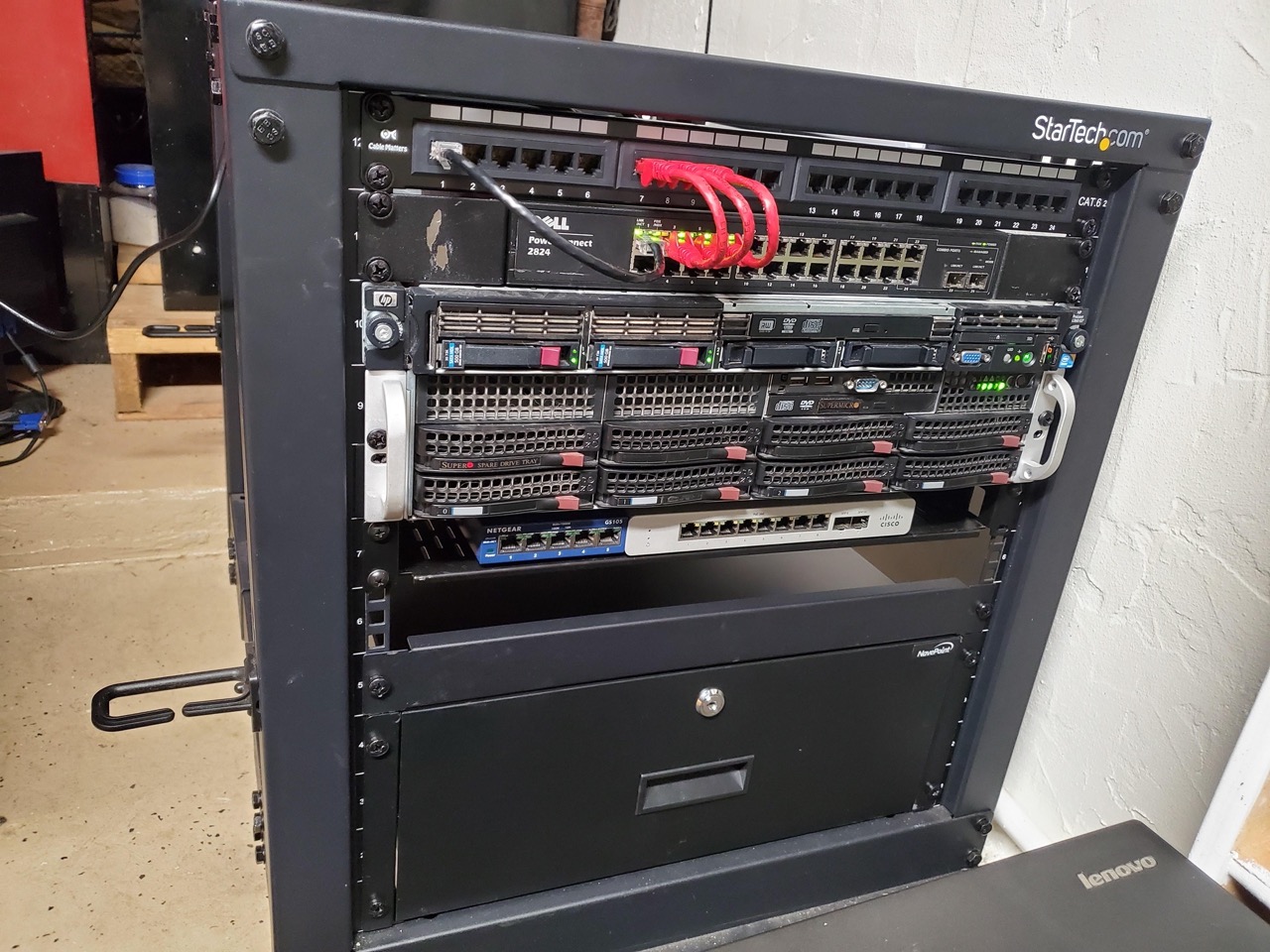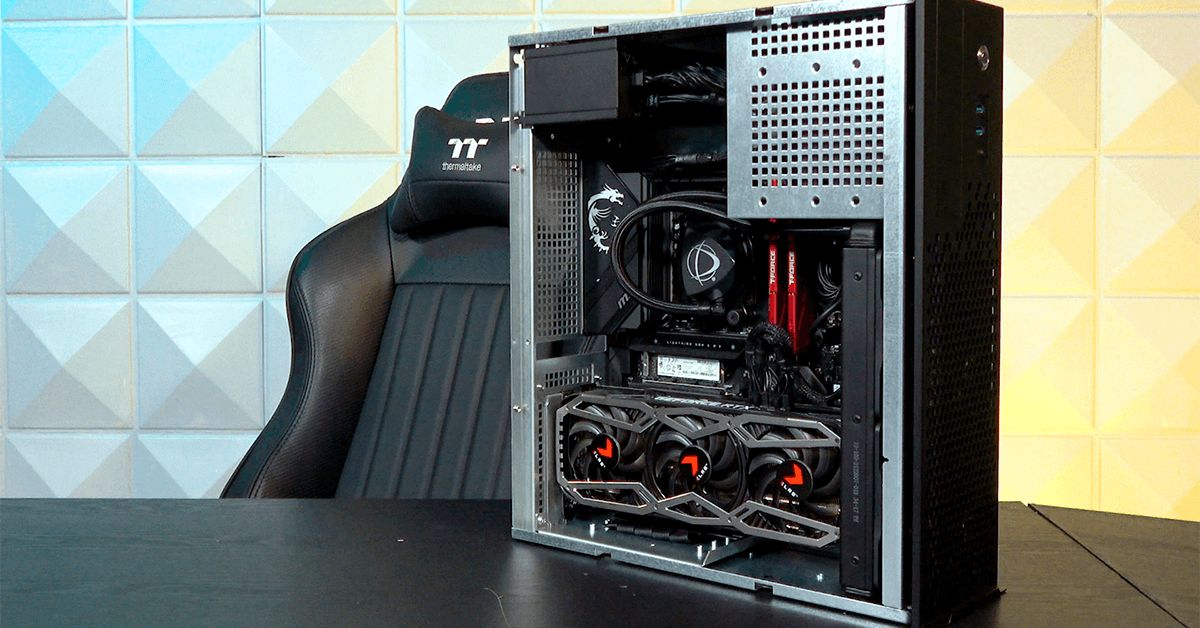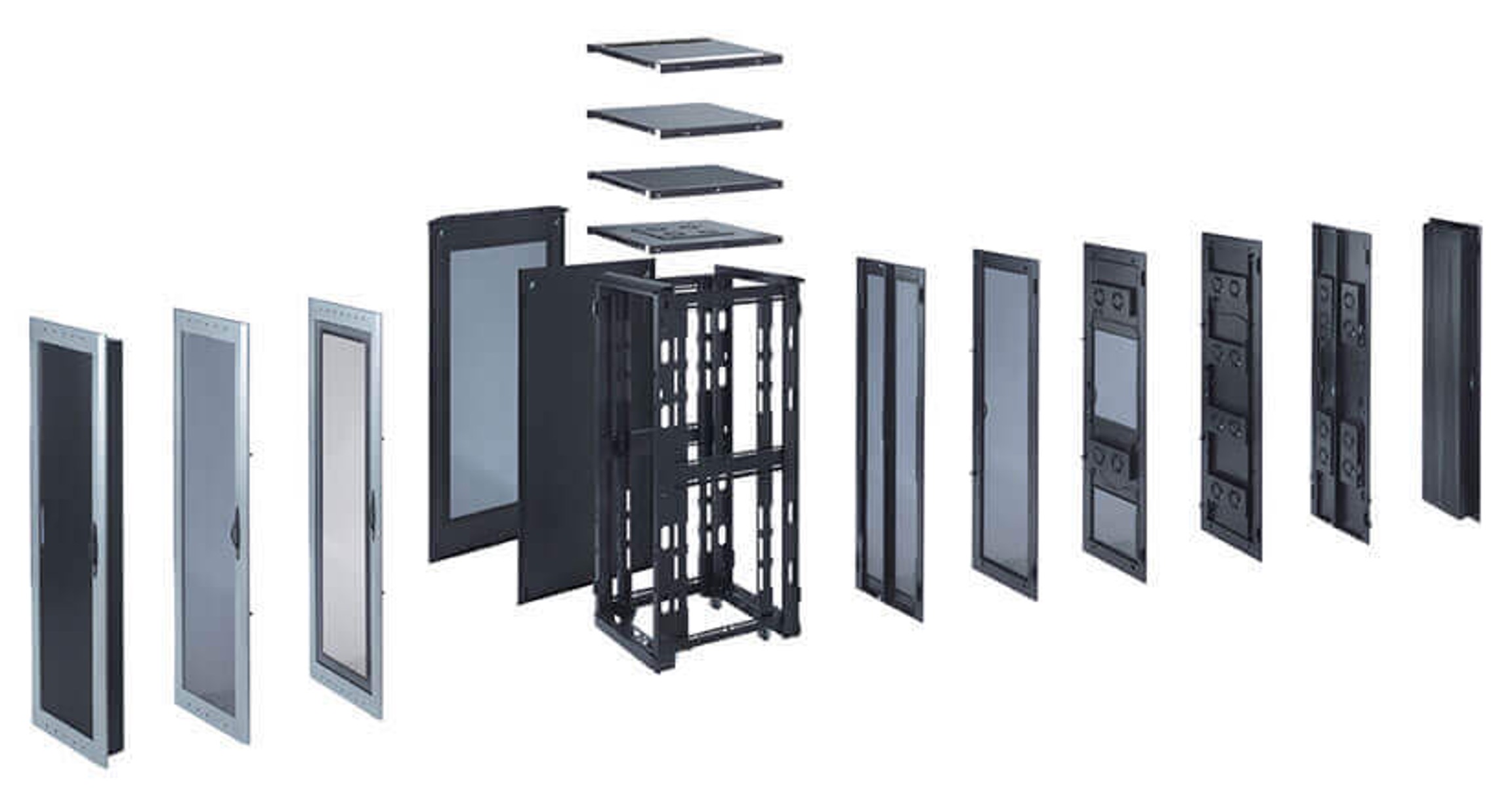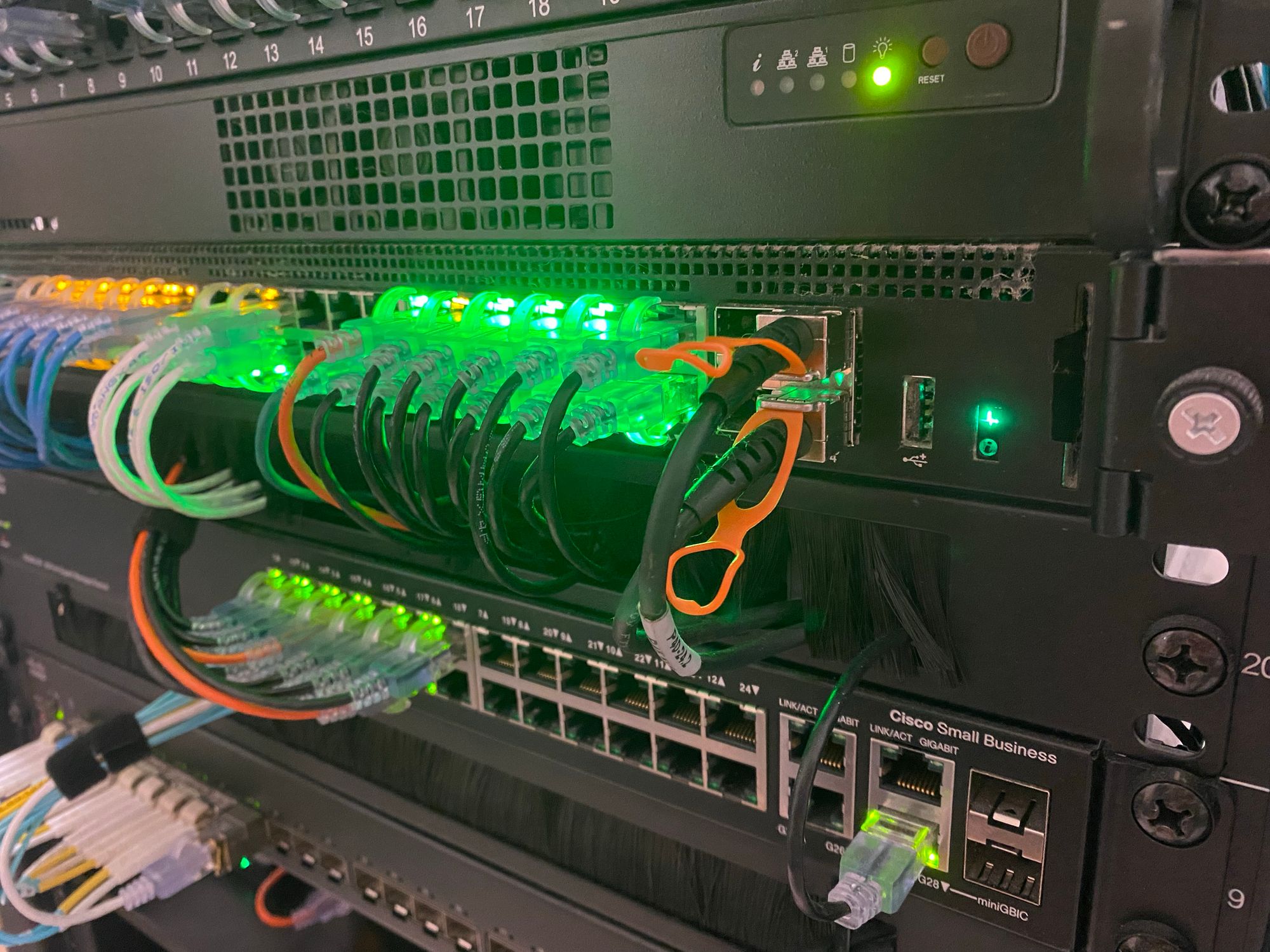Introduction
Welcome to our guide on how to turn your computers into a server rack! Traditional server racks can be expensive and bulky, but with the right knowledge and equipment, you can create your own server setup using computers you already have. This not only saves you money but also allows for greater flexibility and scalability.
Whether you’re a small business looking for a cost-effective server solution or a tech enthusiast wanting to experiment with creating a home server, this guide will provide you with the steps and considerations to effectively turn your computers into a server rack.
By repurposing your existing computers, you can take advantage of their processing power, storage capabilities, and network connectivity to create a customized server environment. This can be particularly useful for hosting websites, managing databases, sharing files, and running applications for your personal or business needs.
Throughout this guide, we will discuss the benefits of using computers as a server rack, the hardware and software considerations involved, as well as step-by-step instructions for setting up and maintaining your server rack. We’ll also cover important aspects such as cooling, power supply, cable management, security measures, and ongoing monitoring.
Now, let’s dive into the details to see how you can transform your existing computers into a powerful and reliable server rack setup. Whether you’re a novice or experienced user, this guide will help you make the most of your resources and leverage the potential of your computers for hosting, managing, and scaling your online presence or network infrastructure.
Benefits of Using Computers as a Server Rack
Turning your computers into a server rack offers several advantages over traditional server racks. Let’s explore some of the key benefits:
- Cost-effectiveness: One of the major benefits is the cost savings. Utilizing the computers you already have eliminates the need to purchase specialized server hardware, which can be quite expensive. This is especially beneficial for small businesses or individuals on a tight budget.
- Flexibility and scalability: By using computers as a server rack, you have the flexibility to choose the hardware and software that best fit your specific needs. You can easily add or remove computers from the rack as your requirements change, allowing for easy scalability and future expansion.
- Customization: When building your own server rack, you have full control over the configuration and specifications of each computer in the rack. This means you can tailor the hardware and software to meet your exact requirements, optimizing performance and functionality.
- Reuse of existing resources: Repurposing your existing computers as a server rack allows you to make use of hardware that might otherwise go unused or be discarded. This not only reduces e-waste but also maximizes the value of your investment.
- Higher processing power and storage: Depending on the computers you choose to include in your server rack, you can benefit from their individual processing power and storage capacities. Combining multiple computers can provide a significant boost to overall performance and storage capabilities.
- Network connectivity: Computers are already equipped with built-in network adapters, allowing them to be easily integrated into your network infrastructure. This ensures seamless communication and data transfer between devices in the server rack.
By leveraging these benefits, you can create a powerful and efficient server rack that meets your specific needs without breaking the bank. Whether it’s for hosting websites, running applications, managing databases, or sharing files, using computers as a server rack offers a cost-effective and customizable solution.
Choosing the Right Computers for Your Server Rack
When selecting computers to build your server rack, it’s important to consider a few key factors to ensure optimal performance and compatibility. Here are some considerations to keep in mind:
- Processing power: Look for computers with sufficient processing power to handle the workload of your intended server applications. Consider the processor speed, number of cores, and cache size to ensure smooth and efficient operations.
- Memory (RAM) capacity: The amount of RAM is crucial for running resource-intensive applications. Choose computers with adequate RAM to support the simultaneous operation of multiple processes and ensure smooth performance.
- Storage: Consider the storage capacity and type (e.g., SSD or HDD) of each computer. If you require high-speed data access, SSDs offer faster read/write speeds compared to traditional hard disk drives.
- Network connectivity: Ensure that the computers have built-in Ethernet ports or wireless capabilities for seamless integration into your network infrastructure. This facilitates communication and data transfer between devices in the server rack.
- Compatibility: Verify the compatibility of the chosen computers with the operating system and software applications you plan to use. Ensure the necessary drivers, software updates, and patches are available for the chosen hardware.
- Power consumption: Consider the power requirements of the computers to avoid overloading the electrical circuits in your server area. Look for computers with energy-efficient components to reduce electricity costs and minimize environmental impact.
- Physical space: Assess the physical dimensions and form factor of the computers to ensure they can fit comfortably within your chosen server rack enclosure. It’s important to leave enough space for proper airflow and easy maintenance.
It’s also worth considering whether to use desktop computers or dedicated server hardware. Desktop computers provide more customization options, while dedicated server hardware offers greater reliability and specialized features. Evaluate your specific needs and budget to determine the most suitable choice.
By carefully considering these factors, you can choose the right computers that match your requirements for performance, compatibility, expandability, and cost-effectiveness. This ensures a solid foundation for building your server rack and maximizes the efficiency and capabilities of your server infrastructure.
Software Considerations for Setting Up a Server Rack
Setting up a server rack involves not only the hardware components but also the software that powers and manages the server environment. Here are some important software considerations to keep in mind:
- Operating system (OS): Choose an operating system that is compatible with the applications and services you plan to run on your server rack. Popular server OS options include Windows Server, Linux distributions (such as Ubuntu Server, CentOS, or Debian), or specialized server OSes like FreeBSD or VMware ESXi.
- Virtualization: Consider implementing virtualization software, such as VMware or Hyper-V, to create virtual machines (VMs) within your server rack. Virtualization allows for better resource allocation, improved scalability, and easier management of multiple systems on a single physical host.
- Server software: Depending on your specific requirements, choose server software such as Apache or Nginx for web hosting, Microsoft SQL Server or MySQL for databases, or other applications tailored to your needs. Ensure that the software is compatible with your chosen operating system.
- Monitoring and management: Implement server monitoring and management tools to track performance, resource usage, and potential issues within your server rack. Software solutions like Nagios, Zabbix, or Microsoft System Center can assist in keeping your server environment running smoothly.
- Security: Implement robust security measures such as firewalls, antivirus software, and regular security updates to protect your server rack from potential threats and vulnerabilities. Consider using tools like Fail2ban or SELinux to enhance security and protect against malicious activity.
- Backup and recovery: Establish a reliable backup strategy to protect your data in case of hardware failures or data corruption. Consider using tools like rsync, Bacula, or cloud-based backup solutions for automated and offsite backups.
- Documentation and configuration management: Keep detailed documentation of your server rack setup, including IP addresses, software versions, and configuration settings. Utilize configuration management tools like Ansible or Puppet to automate and maintain consistency across multiple servers.
It’s crucial to stay up-to-date with the latest software patches, updates, and security advisories. Regularly review and update your software to ensure the stability, security, and performance of your server rack.
By carefully considering these software aspects, you can create a robust and reliable server environment tailored to your specific needs. The right combination of operating systems, server software, monitoring tools, and security measures is instrumental in ensuring the smooth operation and management of your server rack.
Hardware Requirements for Converting Computers into a Server Rack
Converting computers into a server rack requires careful consideration of the necessary hardware components to ensure optimal performance and reliability. Here are the key hardware requirements you should keep in mind:
- Server Rack Enclosure: Choose a server rack enclosure that can accommodate the number of computers you plan to include. Consider factors such as size, airflow, cable management, and accessibility for future maintenance.
- Rack Mount Shelves or Rails: Securely mount the computers within the server rack enclosure using rack mount shelves or rails. Ensure that they are compatible with your chosen server rack and provide proper support and stability.
- Power Distribution Unit (PDU): Use PDUs to distribute power to the computers within the server rack. Choose a PDU with sufficient power outlets and ensure it can handle the total power requirements of all the computers and peripherals connected.
- Network Switch: Install a network switch to connect all the computers within the server rack, facilitating communication and data transfer. Choose a switch with sufficient ports and consider features like port speed (e.g., 1Gbps or 10Gbps) and managed vs. unmanaged options based on your networking needs.
- Rack Mount KVM Switch: A rack mount KVM (Keyboard, Video, and Mouse) switch allows you to control multiple computers within the server rack using a single keyboard, monitor, and mouse. This simplifies management and reduces clutter.
- Rack Mount Power Strip: Utilize a rack mount power strip to efficiently manage power distribution within the server rack. This helps organize and protect power connections, and enables easy access for troubleshooting or adding/removing components.
- Server Rack Cooling: Ensure proper cooling for the server rack to prevent overheating. Install cooling fans, ensure adequate airflow, and consider additional cooling solutions like rack-mounted air conditioners or liquid cooling systems for high-density server setups.
- Rack Mount Cable Management: Proper cable management is essential to maintain an organized and tidy server rack setup. Use rack mount cable management solutions like cable trays, management arms, and Velcro ties to neatly route and secure the cables.
- Rack Mount UPS (Uninterruptible Power Supply): Protect your server rack from power outages or voltage fluctuations by including a rack mount UPS. This ensures uninterrupted power supply and safeguards against data loss or hardware damage.
Consider the specific needs of your server rack setup, such as the number of computers, networking requirements, and power consumption, when selecting the appropriate hardware components for your server rack.
By choosing the right hardware components, you can ensure the stability, reliability, and efficient operation of your converted server rack, providing a solid foundation for your server infrastructure.
Step-by-Step Guide to Building Your Server Rack
Building your server rack requires careful planning and execution. Follow these step-by-step instructions to ensure a successful setup:
- Assess your needs: Determine the specific requirements of your server rack, including the number of computers, desired hardware components, and available space.
- Choose the server rack enclosure: Select a server rack enclosure that matches your requirements in terms of size, airflow, cable management, and accessibility.
- Prepare the rack mount shelves or rails: Install the rack mount shelves or rails within the server rack enclosure, ensuring they are securely attached and properly aligned.
- Mount the computers: Carefully position and mount the computers onto the rack mount shelves or rails, ensuring they are securely fastened and properly aligned.
- Connect the power and network: Connect the power cables and network cables to each computer, ensuring proper cable management and organization.
- Install the power distribution unit (PDU): Mount and connect the PDU within the server rack enclosure, distributing power to the computers and peripherals.
- Set up the network switch: Install and configure the network switch, connecting all the computers within the server rack to create a network infrastructure.
- Configure the server software: Install and configure the operating system and server software on each computer based on your specific requirements.
- Set up remote access: Configure remote access options, such as secure shell (SSH) or remote desktop protocol (RDP), to allow remote management and administration of the server rack.
- Implement cooling and ventilation: Install cooling fans, ensure proper airflow, and consider additional cooling solutions to prevent overheating within the server rack.
- Manage cables and cable organization: Neatly route and secure cables using rack mount cable management solutions, ensuring a clean and organized setup.
- Ensure power supply and redundancy: Implement a rack mount UPS for uninterrupted power supply and consider redundant power sources for added reliability.
- Implement security measures: Configure firewalls, enable encryption, and implement security measures to safeguard your server rack from potential threats.
- Perform testing and monitoring: Test the functionality of the server rack and implement monitoring tools to track performance and address any potential issues.
- Maintain and update: Regularly maintain and update the server rack, including hardware components, software patches, and security measures, to ensure optimal performance and security.
Following these steps will help you effectively build your server rack and ensure a reliable and efficient server infrastructure that meets your specific needs.
Proper Cooling and Ventilation for Your Server Rack
Proper cooling and ventilation are essential for maintaining the optimal performance and reliability of your server rack. Without adequate cooling, the components within the rack can overheat, leading to system failures and reduced lifespan. Here are some important considerations for ensuring proper cooling and ventilation:
- Server rack placement: Position your server rack in a well-ventilated area with sufficient space around it. Avoid placing the rack near heat sources or in areas with limited airflow.
- Cooling fans: Install cooling fans within the server rack enclosure to facilitate air circulation. Position the fans strategically to create a consistent flow of cool air from the front to the back of the rack.
- Airflow management: Use blanking panels to cover any unused spaces within the server rack. This helps guide the airflow through the active components and prevents recirculation of hot air.
- Hot and cold aisle arrangement: Organize the placement of your server rack so that the front sides of the equipment face each other, creating a cold aisle, while the rear sides face each other, forming a hot aisle. This optimizes airflow and reduces the mixing of hot and cold air.
- Rack-mounted cooling devices: Consider using rack-mounted air conditioners or liquid cooling systems for high-density server racks or environments with specific temperature requirements. These specialized cooling solutions can provide targeted cooling to sensitive components.
- Temperature monitoring: Install temperature sensors within the rack to constantly monitor the temperature levels. Use monitoring software or tools to receive alerts or notifications if the temperature exceeds specified thresholds.
- Cable management: Proper cable management is crucial for maintaining good airflow. Organize and route cables away from the front and back of the server rack to prevent obstructions and ensure free air movement.
- Regular maintenance: Keep the cooling fans clean and free from dust accumulation. Regularly inspect and clean the server rack to ensure proper airflow and prevent blockages.
- Room temperature and humidity control: Maintain an appropriate room temperature, typically between 18 to 27 degrees Celsius (64 to 80 degrees Fahrenheit), and a humidity level between 40% and 60% to prevent the formation of condensation and reduce the risk of equipment damage.
By implementing proper cooling and ventilation measures, you can maintain optimal operating temperatures within your server rack, prolong the lifespan of your hardware, and ensure uninterrupted performance. Regularly monitor and assess the cooling effectiveness to identify any potential issues and make necessary adjustments to maintain the ideal operating conditions.
Ensuring Power Supply and Redundancy
Ensuring a reliable power supply is crucial for the continuous operation and protection of your server rack. Power interruptions or failures can lead to data loss, system crashes, and potential damage to hardware components. Here are some essential considerations for ensuring power supply and redundancy in your server rack:
- Uninterruptible Power Supply (UPS): Install a rack mount UPS to provide backup power during power outages or fluctuations. A UPS acts as a battery backup, allowing the servers to gracefully shutdown or continue running until power is restored.
- Power Distribution Unit (PDU): Utilize rack mount PDUs to efficiently distribute power to the servers and peripherals within the server rack. Ensure that the PDUs have enough outlets to accommodate all the devices and consider models that offer remote monitoring and control capabilities.
- Redundant Power Supplies: Select servers with redundant power supply options. Redundant power supplies provide an additional layer of protection by automatically switching to a backup power supply if the primary supply fails.
- Power Load Balancing: Distribute the power load evenly across the different power circuits and phases in the rack to avoid overloading a particular circuit. Monitor power consumption regularly to ensure that it remains within the designated limits.
- Monitoring and Alarming: Implement power monitoring and alarming systems to receive notifications or alerts in case of power fluctuations, high loads, or other power-related issues. This allows for proactive response and troubleshooting before it affects critical operations.
- Generator Backup: If your server rack supports critical applications or requires continuous operation, consider implementing a backup generator to provide long-term power during extended outages. Make sure that the generator is properly maintained and periodically tested.
- Redundant Network Connections: To ensure uninterrupted network connectivity, consider implementing redundant network connections using diverse paths and multiple network switches. This helps minimize the risk of network failure and maintains data accessibility.
- Power Conditioners: Protect your equipment from power surges or voltage fluctuations by using power conditioners or surge protectors. These devices filter and stabilize the incoming electrical supply, safeguarding your servers and networking equipment.
- Regular Testing and Maintenance: Periodically test the UPS, batteries, and power redundancy systems to ensure they are functioning correctly. Replace batteries as recommended by the manufacturer to maintain optimal performance.
By implementing these measures, you can minimize the risk of power-related disruptions and ensure the availability and reliability of your server rack. Redundant power supplies, UPS systems, power distribution monitoring, and regular maintenance help safeguard against power failures and provide a robust power infrastructure for your critical applications and data.
Managing Cables and Connectivity in Your Server Rack
An organized and well-managed cable infrastructure is essential for maintaining the efficiency, accessibility, and overall functionality of your server rack. Proper cable management helps prevent cable tangling, reduces the risk of accidental disconnections, and facilitates easier troubleshooting and maintenance. Here are some important considerations for managing cables and connectivity within your server rack:
- Cable Lengths: Use appropriate cable lengths to avoid excess slack or tight pulls within the server rack. Measure and plan the cable lengths required to connect each device efficiently.
- Cable Labeling: Label all cables at both ends with clear and descriptive tags or labels. This makes it easier to identify and trace cables during installation, maintenance, or troubleshooting.
- Cable Routing: Plan and implement efficient cable routing paths within the server rack. Separate power and data cables to minimize interference and ensure clean signal transmission.
- Cable Trays and Channels: Utilize cable trays or channels to neatly run cables along the sides or rear of the server rack. This helps organize and separate different types of cables, reducing the clutter.
- Cable Ties and Velcro Straps: Securely bundle cables together using cable ties or Velcro straps. This helps maintain a tidy and organized appearance while allowing for easy cable management and future modifications.
- Color Coding: Consider using different colored cables to distinguish between power, network, and peripheral connections. This enables quick identification and reduces confusion during installation or troubleshooting.
- Hot-Swappable Components: If your server rack includes hot-swappable components such as hard drives or power supplies, ensure that the cables are easily accessible and labeled for quick replacement or maintenance.
- Vertical or Horizontal Cable Management: Choose between vertical or horizontal cable management based on your specific server rack enclosure. Vertical cable management is more suitable for taller racks, while horizontal management is ideal for shorter racks.
- Cable Organization Tools: Utilize cable management accessories such as cable rings, cable organizers, or cable management arms to keep cables organized, prevent slack, and optimize airflow.
- Regular Audits and Maintenance: Conduct regular cable audits to ensure cables are properly connected, labeled, and in good condition. Perform routine maintenance to adjust, replace, or reorganize cables as needed.
Proper cable management reduces the risk of human error, simplifies troubleshooting, and improves airflow within the server rack, which can contribute to better overall performance and extend the lifespan of your equipment. By implementing effective cable management strategies, you can maintain a clean and organized server rack with efficient connectivity and accessibility.
Security Measures for Protecting Your Server Rack
Protecting your server rack from potential security threats is vital for ensuring the confidentiality, integrity, and availability of your data. Implementing robust security measures helps safeguard against unauthorized access, data breaches, and malicious attacks. Here are some important security considerations for protecting your server rack:
- Physical Security: Secure the physical access to your server rack by keeping it in a locked room or enclosure. Limit access to authorized personnel only and track any entry or exit using access control systems or video surveillance.
- Rack Locks: Use rack locks or cabinet locks to prevent unauthorized physical access to individual servers or networking equipment within the rack.
- Firewall: Install and configure a firewall to control and monitor incoming and outgoing network traffic. Regularly update firewall rules to reflect the latest security standards and best practices.
- Antivirus and Anti-malware: Install reputable antivirus and anti-malware software on each server within the rack. Regularly update and scan for any malicious software or vulnerabilities.
- Strong Authentication: Enforce strong password policies across all servers, switches, and management interfaces within the rack. Implement two-factor authentication (2FA) whenever possible to add an extra layer of security.
- Encryption: Encrypt sensitive data at rest and in transit to protect it from unauthorized access. Utilize encryption protocols such as SSL/TLS for secure communication across the network.
- Regular Updates: Keep the operating systems, software applications, and firmware up to date by applying regular security patches and updates. This helps protect against known vulnerabilities and exploits.
- Network Segmentation: Separate your server rack from the rest of your network using VLANs or dedicated network segments. This limits unauthorized access and contains potential threats.
- Regular Security Audits: Conduct periodic security audits to identify and address potential security vulnerabilities within your server rack. Perform penetration testing to assess the overall security posture of your infrastructure.
- Monitoring and Log Analysis: Implement server and network monitoring tools to track and analyze system logs for any suspicious activities or anomalies. Set up alerts to notify you of any security incidents or unauthorized access attempts.
- Employee Training and Awareness: Train your staff on security best practices and the importance of adhering to security policies. Foster a culture of security awareness to minimize the risks of insider threats and social engineering attacks.
By implementing comprehensive security measures, you can significantly reduce the risks associated with unauthorized access, data breaches, and other security threats. Protecting your server rack ensures the confidentiality, integrity, and availability of your data and contributes to maintaining a secure and reliable server environment.
Maintenance and Monitoring of Your Server Rack
Maintaining and monitoring your server rack is essential for ensuring its optimal functionality and performance. Regular maintenance and proactive monitoring help identify potential issues, prevent hardware failures, and mitigate risks. Here are some important considerations for effectively maintaining and monitoring your server rack:
- Cleaning and Dust Control: Regularly clean the server rack, including the hardware components, cooling fans, and air vents, to remove dust and debris that can impede airflow and cause overheating.
- Hardware Inspections: Conduct routine inspections of the hardware components within the server rack, such as power supplies, hard drives, and cooling systems. Look for signs of wear or damage and replace any failing components promptly.
- Software Updates: Keep your server operating systems, applications, and firmware up to date by applying the latest software patches and updates. Regular updates help close security vulnerabilities and introduce new features and bug fixes.
- Backup Testing: Regularly test the backup procedures and restore functionality to ensure that your data can be recovered in case of a failure or disaster. Verify the integrity and accessibility of the backup files to maintain data availability.
- Performance Monitoring: Monitor server performance metrics such as CPU usage, memory utilization, and network bandwidth to identify any anomalies or bottlenecks. Utilize monitoring tools or software that provide real-time insights and generate alerts for critical events.
- Capacity Planning: Keep track of resource utilization trends and plan for future growth and scalability. Regularly assess your server rack’s capacity to ensure that it can handle the projected workload and accommodate additional hardware or software requirements.
- Fault Detection and Remediation: Implement monitoring tools that can detect and alert you to hardware failures, network issues, or other system faults. Establish procedures to promptly respond to and resolve any identified issues.
- Security Audits: Conduct periodic security audits to assess the effectiveness of your security measures and identify any vulnerabilities or risks. Perform penetration testing to simulate potential attacks and test the resilience of your server rack’s security defenses.
- Documentation and Asset Management: Maintain accurate records of the server rack configuration, including hardware specifications, software versions, network configurations, and IP addresses. Update documentation regularly and keep track of any changes or modifications made to the rack.
- Tracking Service and Warranty: Keep track of the service and warranty periods for your server rack components. Schedule regular maintenance and check for any available firmware or hardware updates provided by the manufacturers.
By implementing regular maintenance schedules and monitoring practices, you can ensure the optimal performance, stability, and security of your server rack. Regular inspections, software updates, backups, and monitoring activities help identify potential issues and allow for timely remediation, contributing to the overall reliability and longevity of your server infrastructure.
Conclusion
Setting up a server rack using existing computers offers numerous benefits, including cost-effectiveness, flexibility, and customization. By repurposing your computers, you can create a powerful and reliable server infrastructure tailored to your specific needs.
Throughout this guide, we discussed the key steps and considerations for converting computers into a server rack. We explored the benefits of using computers as a server rack, the hardware and software requirements, as well as the importance of proper cooling, power supply, cable management, security measures, and ongoing maintenance and monitoring.
Choosing the right computers, maintaining adequate cooling and ventilation, ensuring power supply and redundancy, managing cables and connectivity, implementing security measures, and conducting regular maintenance and monitoring are all critical elements for a successful server rack setup.
Remember to consider factors such as processing power, memory capacity, storage, network connectivity, and compatibility when selecting the computers for your server rack. Implement proper cooling techniques, such as installing cooling fans, organizing cable management to optimize airflow, and utilizing temperature monitoring tools.
Ensure a reliable power supply by using UPS systems, power distribution units, and redundant power supplies, as well as implementing security measures to protect your server rack from unauthorized access and potential threats.
Regular maintenance, software updates, backup testing, performance monitoring, and security audits are crucial for maintaining the optimal functionality and security of your server rack.
By following these guidelines and putting in the necessary effort, you can transform your computers into a robust and efficient server rack that meets your unique requirements. Whether it’s for personal, small business, or enterprise use, a well-built server rack empowers you to host websites, manage databases, share files, and run applications smoothly.
We hope this guide has provided useful insights and guidance for your journey in building and managing a server rack. Now it’s time to roll up your sleeves and make the most of your existing computers by creating a powerful server infrastructure that suits your needs and enables you to achieve your goals.







